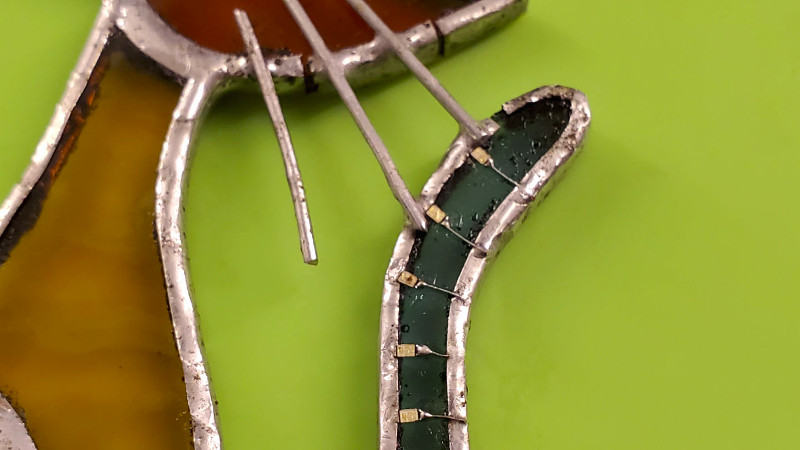Stained glass is an art form that goes back many centuries, with the churches and cathedrals of Europe boasting many stunning examples from the mediaeval masters of the craft. You do not however have to go to York or Chartres cathedrals to experience stained glass, for it remains a vibrant and creative discipline with many contemporary practitioners. One thing the stained glass of today has in common with that of yesteryear though is that it remains static, being composed of pieces of glass held together by metal strips. This is something that [Frank Zhao] has addressed as he has evolved a technique that allows him to incorporate LEDs into static stained glass, making for a particularly eye-catching effect.
It’s likely that we join many readers in not knowing the intricacies of making a piece of stained glass, so his is a fascinating write-up for its step-by-step run-through. His stained glass cat has pieces of glass edged with copper tape, which he then solders together. Driving the LEDs is not something that should be alien to us, but his method of using the copper-and-solder stained glass joints as conductors for them by creating strategically placed cuts is very effective. The final effect is of a homogeneous piece without the cuts being particularly visible , but with a pleasing array of lights on the cat’s tail. Those of us for whom stained glass production is new have learned something of the technique, and stained glass artists have seen their craft do something completely new.
Stained glass hasn’t featured here too often, the closest we’ve come is this striking fake stained glass Iron-Man themed panel a few years ago.
















Very nice bit of agile thinking. So simple. Excellent.
Absolutely brilliant. I can see some amazing pieces being created by expanding on this.
Yea, me too. Maybe EL wire could also be used to give a more diffused look.
Interesting idea. Not sure how good the effect really looks in person, not an easy thing to get great images of.
I think one step further might be a cooler look – grind a little divot (though with really small surface mount maybe not needed) into the glass between gaps in the tape – so the led’s are soldered to edge light the panes..
>”composed of pieces of glass held together by metal strips”
What other metal besides lead can you use? Antimony?
Typically, the pieces are edged with self adhesive copper, then soldered together.
The confusion is probably that this is foil-wrap stained glass. There’s also lead channel stained glass, which is what you normally see in church windows.
Copper foil isn’t the best so for heavy glass, like a full window, you want something more solid. Commonly zinc came or lead came. You still need to solder though, but lead-free is an option, just not a popular one unless you absolutely require it.
I reckon it could look a lot better if the LEDs were on the edge of the glass though wiring it would need some more inventive thinking.
I thought the same, reckon you could try cutting some notches with a high speed fine grit tile saw type ceramic blade, and sticking the SMLED in with a large solder blob topped with flux on one term and teflon insulated fine hookup wire going to the other terminals, then copper tape over that and give extra heat to tape over those so they connect to it.
Though a bit fiddly you could maybe lay the tape on one edge of the glass, scratch adhesive, flux and tin, and make sure of the connection before you fold it round to the other edge of the glass, same thin wire and high temp insulation other side.
Sweet
Powered glass. Now if only “self” could be introduced.
Replace some of the tiles with solar cells
Should work, my watch does that quite nicely..
It’s very attractive. I would quite like one, although I doubt the magnet wire between the battery holder and the glass.
Cool way to incorporate LEDs in an artpiece!
LEDs in oil paintings.
The battery holder also resembles a cat!
I am a stained glass maker & think this is a great idea. Is there step by step guide on how to do this. I have no electrical training .